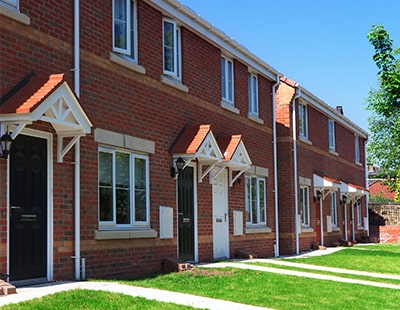
The debate over whether private or public investment should be prioritised when it comes to building new homes continues to divide opion, but a new report has argued that London needs to 'urgently embrace' private capital funding to grow the number of affordable homes in the capital.
A report by one of London's leading business campaign groups, BusinessLDN, in partnership with CBRE, says that the current level of investment into new affordable housing stock only 'scratches the surface' of what is needed in the capital.
The joint report, titled 'The Case for Private Investment in Affordable Housing in London', claims that London needs 66,000 new homes a year and has a strategic target that half of all homes built in the capital should be considered genuinely affordable - a term that is always somewhat hard to define and seemingly subject to interpretation.
Currently, though, housebuilding in London falls short of this target. Provision figures reveal that, in the capital in 2019/20, only 43,850 new homes were built. Of those, only 8,710 were deemed affordable homes. While the pandemic had a significant impact on housebuilding, many would argue these numbers are much lower than they should be.
As such, the report lays out a number of recommendations for how more private capital can be secured to increase affordable housing delivery. There is, in particular, a specific focus on what those who govern London can do, with the report suggesting they embrace two new ideas:
-
Capitalisation of rental income – The affordable housing stock in London is worth approximately £67 billion and generates a surplus income of £2 billion. There is an opportunity to release value by enabling private capital to acquire a proportion of this revenue stream. This frees up capital for housing associations to further develop their affordable housing pipeline.
-
Ringfenced "top up" grant - A proportion of grant funding from the Greater London Authority's (GLA) current Affordable Housing Programme could be ringfenced to support schemes which, with a grant "top up", would become viable and built. The "top up" would be repaid to the GLA when the development is completed, and the homes are rented or sold, which is earlier than the grant recycling rules under the existing programme. This enables developers to commit to a scheme which delivers 100% affordable homes.
The report argues that, while the government does fund the GLA Affordable Housing Programme, the total amount of this funding - some £4 billion stretching from 2021 to 2026 - is not sufficient to address London's affordable housing needs.
It goes on to say that, considering the current challenges facing the sector – namely financial constraints, the investment required into existing homes and meeting the decarbonisation agenda – 'innovative approaches and new sources of private capital' are needed to accelerate the delivery of affordable homes.
"London desperately needs more affordable housing, but our current system is failing to deliver the volume of new homes that are required. Now is the time to tackle that head-on and pursue a new approach. There is no shortage of private investment that could be deployed into affordable housing. The question is, do politicians want this investment to happen at scale and are they willing to proactively shape the market?" Jonathan Seager, director of place at BusinessLDN, said.
Justin Carty, executive director investment advisory at CBRE, added: "Delivering new affordable housing, as well as investment into existing homes, is critically important. The not-for-profit sector plays a key role in housing management and delivery in London and beyond. We believe that partnering with culturally aligned private capital can help accelerate the delivery of much needed new affordable homes as well as investment into the upkeep and maintenance of existing stock."
Some will maintain that the state has the biggest role to play in housebuilding, especially at times of crisis, and would point to the post-war housebuilding boom as evidence of that. Others will continue to suggest that private capital is much-needed at a time when spare government money is spare, or that at the very least a combination of private and public investment schemes is the way forward.



















Join the conversation
Be the first to comment (please use the comment box below)
Please login to comment